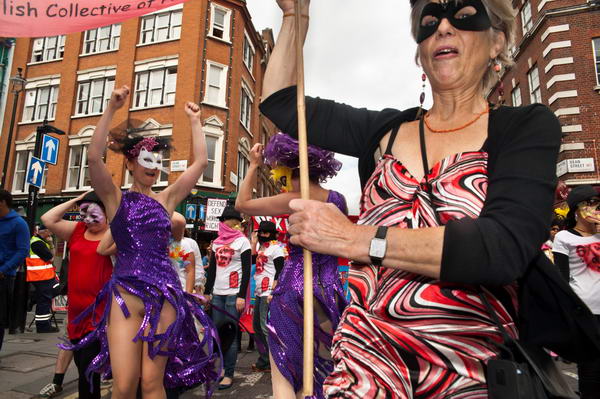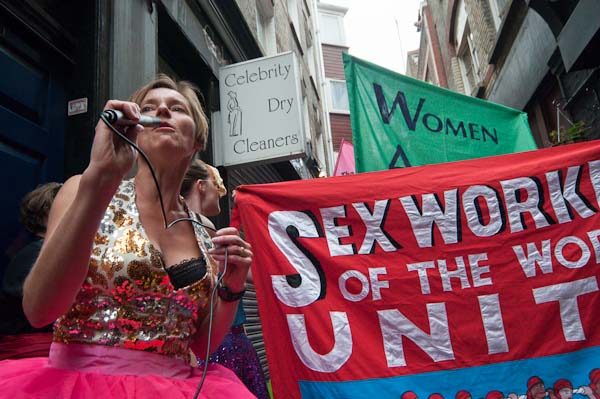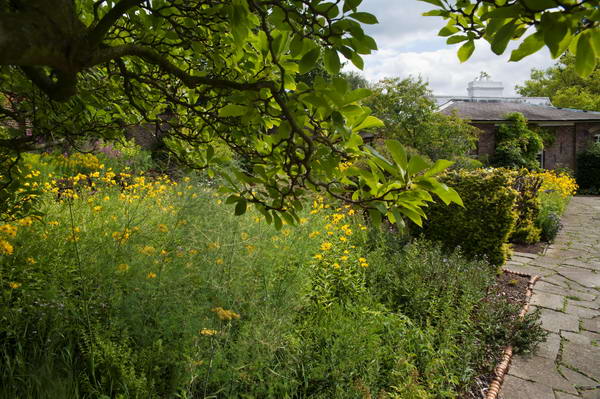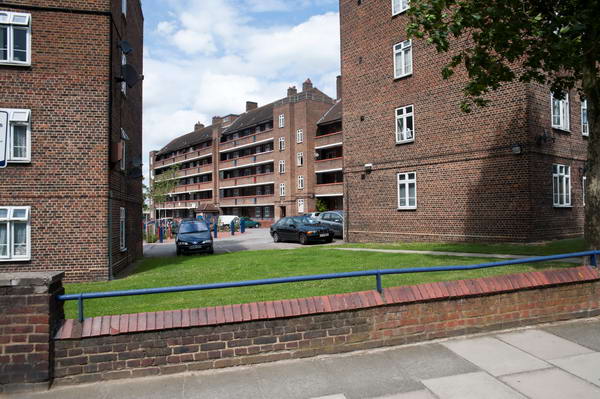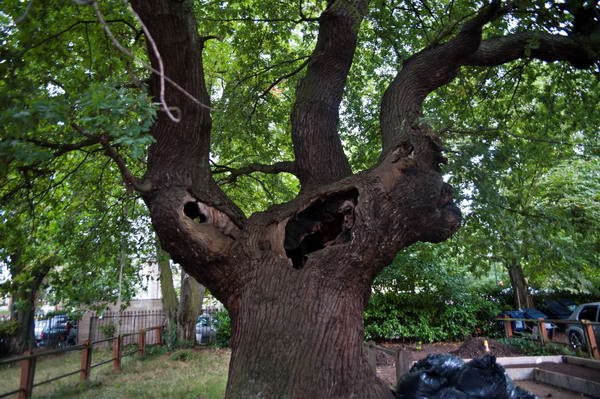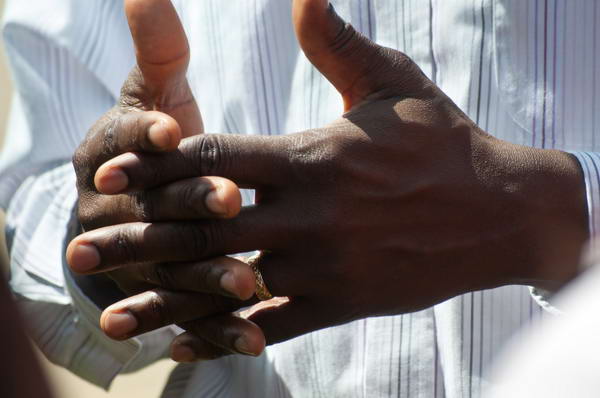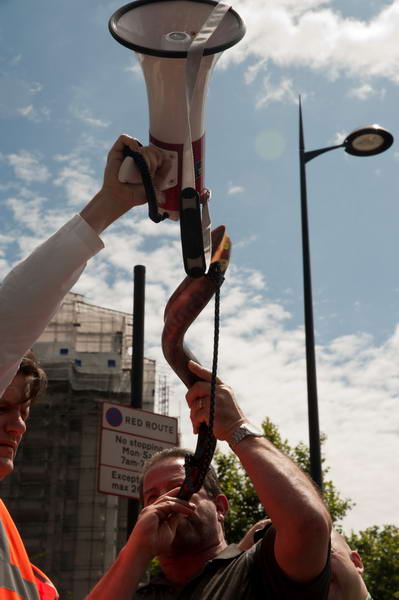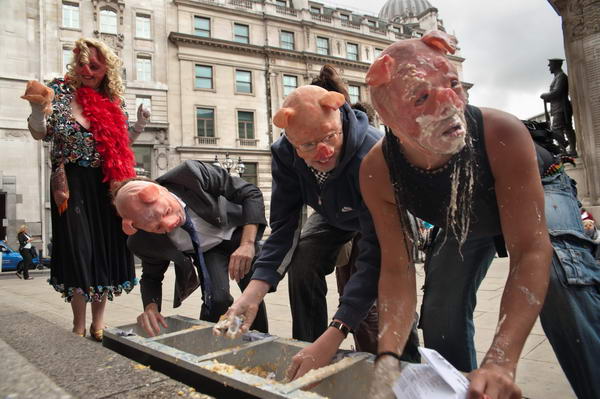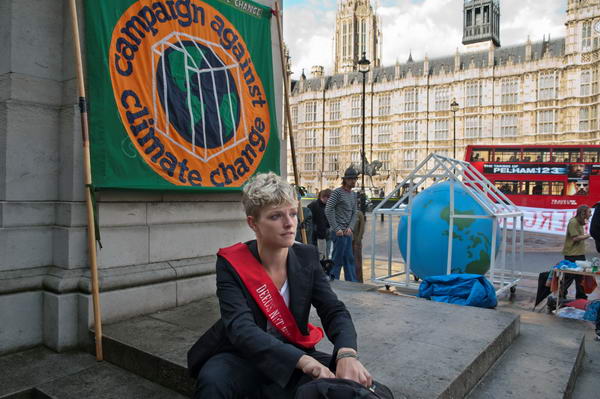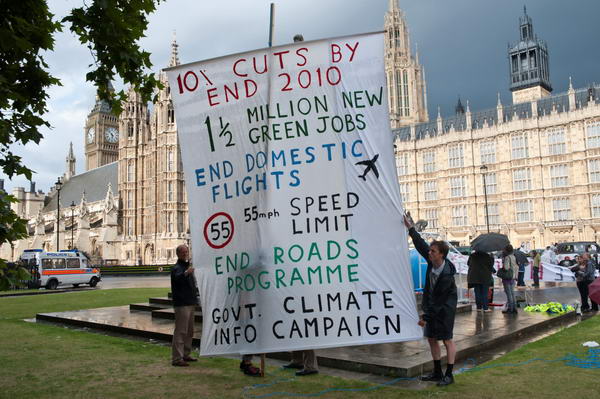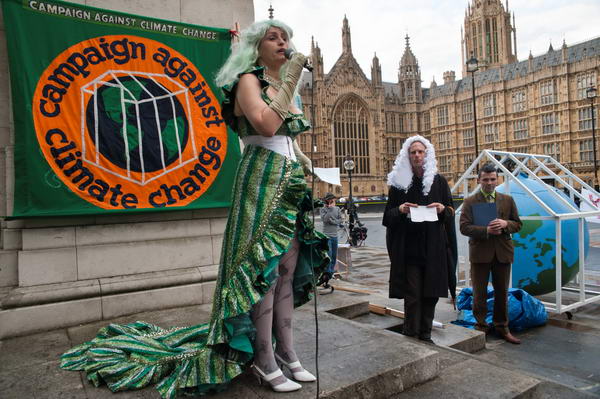The demonstration at the French Embassy on Monday was perhaps most interesting for the curiously mixed actions of the police, both toward the demonstrators and the press.
The Embassy is on the corner of Knightbridge and Albert Gate, with its entrance a few yards down Albert Gate. Police wanted the demonstrators to stand in a pen on the other side of Knightsbridge a few yards to the west, where they could only see the Embassy across 4 lanes of traffic. They decided not to comply as it was too far away for their protest to be effective – those in the Embassy would probably not be able to see or hear much of the demonstration, and the protest continued for around an hour and a half in Albert Gate.
One officer came and told a couple of demonstrators standing on the pavement in the centre of the road with a large banner they had to move because they were causing an obstruction. Clearly they were carefully positioned out of the way of anyone, but in the end they decided to move and asked her where they could stand and not cause an obstruction. She then told them they would be OK to stand on the roadway right in front of the embassy entrance porch, much to the consternation of the police who were standing there.
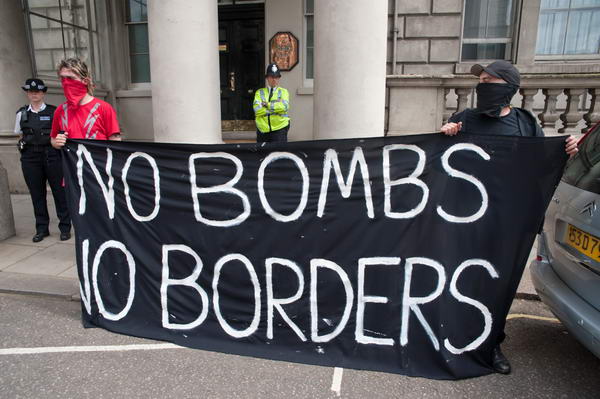
The same woman officer also took one of the demonstrators to the door of the embassy and arranged for one of the diplomats to come out and talk to her as she wanted to hand the leaflet in to the embassy. He came out and they stood for five minutes or so talking on the embassy steps.
At one point while I was photographing the two of them one of the officers standing on the steps deliberately came and stood in front of my lens. I moved to one side and he moved to keep my view blocked. We went back and forth perhaps a dozen times, he obviously thinking it was a fun game. Since his reactions were a little slow I was still able to get some pictures, but this isn’t the kind of cooperation the police are expected to give the press.
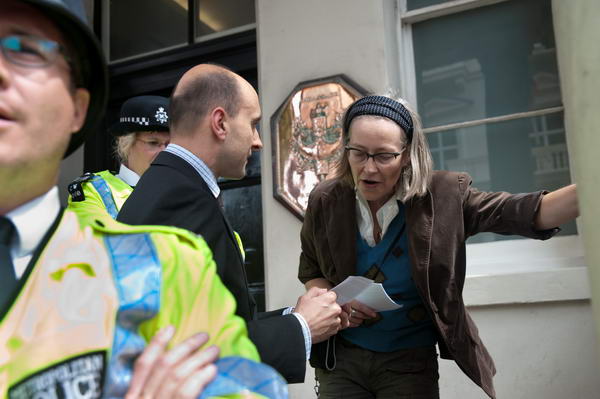
He hasn’t yet noticed I’ve moved to the right…
I should have made a complaint to the senior officer present, but by that time I would have missed the pictures, so having got a few from that position I moved elsewhere to continue taking pictures.
Another curious incident came when I was talking to another photographer in the middle of the road, and he noticed the police photographer who had been hiding behind a police van come out and point his telephoto lens directly at us rather than the protesters. We went across to him and asked him why he was taking pictures of the press and he denied strongly that he was, saying he had no interest in us at all. I suppose it’s some kind of progress. Other than these two incidents, so far as I’m aware, photographers had no issues at all with police behaviour.
A few minutes before the demonstration, which had been entirely peaceful throughout, was due to finish at 2pm, a van load or two of police dressed in blue overalls and some carrying tasers arrived and began to look at the demonstrators in a very menacing way.
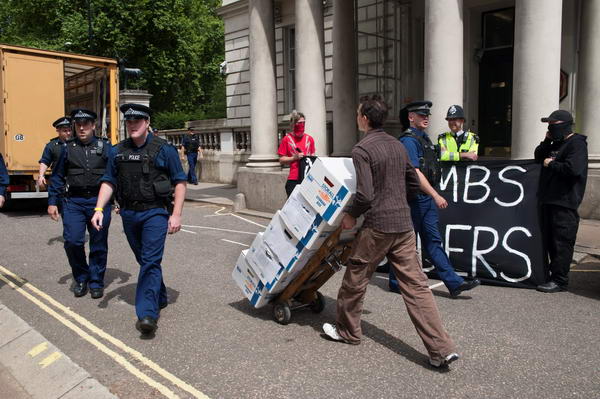
One masked protester who had been annoying the police photographer was then warned under Section 14 of the 1986 Public Order act and then arrested. The other demonstrators were then warned under the same act that they would also be arrested if they didn’t move across the road to the pen, and eventually decided to go. Once they reached the other side of the road they decided that since they had been demonstrating for over an hour and a half it was time to leave.
More about Calais and this demonstration – and of course more pictures – on My London Diary.
